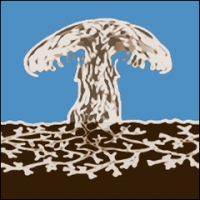Failure is the foundation of success
Fongivore offers a practical guide on effective culture of mycelium. It covers all necessary knowledge from theory to the construction of the adequate equipment. The proposed methods show how to produce at least 25 liters a day. Each liter of this young mycelium has the potential to inoculate 40 more.
Whether is it about the food industry (alcohol, bakery, edibles, tempeh), agriculture (agroforestry, mycorrhiza), ecology (biodegradation, mycofiltration, mycoremediation), or in other areas (biopolymer, medecine), fungal potential is considerable.
Presentation

Harvesting a mushroom is equivalent to picking a flower. What we see is only a modest extension of a wide network of underground mycelium, often linked to many plants. The mycelium is the vegetative part of the fungus; like a worm-shaped spider web, it decomposes organic matter and develops through its immediate environment, which serves simultaneously as a shelter, food and support. Fungi share many similarities with animals. Like us, they breathe oxygen, exhale carbon dioxide, and are incapable of photosynthesis. They need an intermediate, plants, to use solar energy.
As we know it, natural selection favored the organisms that were the most prone to help each others.1) Among the most advanced modes of interaction, there are mutual associations, beneficial to both partners. Fungi often play this role in nature, it is estimated that more than 85% of plants use mycorrhizae2) (mycelium — roots association). The mycelium is composed of thin filaments called hyphae, so thin that a cubic centimeter of soil can contain more than 780 meters of it !3) These filaments become a dense extension of the root system and improves mineral assimilation, resistance to drought, diseases and other stresses.4)
Fungi are also important decomposers which ensure the transition of carbon from plants to the soil. At the end of their useful life, the parcels transform into an excellent compost, rich in enzymes.5) If they are properly maintained, some species may persist for many years. (Read more)
Please note that all non-referenced content is available under license CC BY-NC-SA 3.0.
It can be used and modified freely, provided to be attributed to the original author and to remain under the same license terms. Commercial use must be explicitly approved by the author.
~~DISCUSSION:off~~